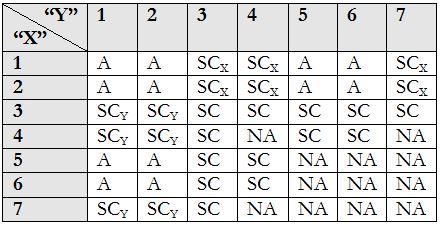On April 4, 2016, the Securities and Exchange Commission (“SEC”) and the Commodity Futures Trading Commission (“CFTC”) jointly issued guidance (“Proposed Guidance”) preliminarily concluding that certain electric power capacity contracts and certain natural gas supply contracts (each as described below) constitute “customary commercial arrangements”[1] and, as such, should not be considered “swaps” under the Commodity Exchange Act, as amended by the Dodd-Frank Act (“CEA”). The Proposed Guidance generally describes these two types of qualifying contracts as follows:
- Certain electric power capacity contracts: Capacity contracts in electric power markets that are used in situations where regulatory requirements from a state public utility commission obligate load serving entities and load serving electric utilities in that state to purchase ‘‘capacity’’ (sometimes referred to as ‘‘resource adequacy’’) from suppliers to secure grid management and on-demand deliverability of power to consumers.
- Certain natural gas supply contracts: Peaking supply contracts that enable an electric utility to purchase natural gas from another natural gas provider on those days when its local natural gas distribution companies curtail its natural gas transportation service.
The Proposed Guidance does not supersede or affect the CFTC’s earlier exclusion from the swap definition for capacity contracts and peaking supply contracts that qualify as forward contracts with “embedded volumetric optionality.”[2] The comment period for the Proposed Guidance ends on May 9, 2016.
[1] See Further Definition of “Swap,” “Security-Based Swap,” and “Security-Based Swap Agreement”; Mixed Swaps; Security-Based Swap Agreement Recordkeeping, 77 Fed. Reg. 48,208, 48,246 (August 13, 2012) (the “Product Definition Rule”). Among other things, the Product Definition Rule established an exemption to the definition of swaps for “commercial transactions.” The purpose of this exemption is to “allow commercial . . . entities to continue to operate their businesses and operations without significant disruption and provide that the swap . . . definitions are not read to include commercial . . . operations that historically have not been considered to involve swaps.” Id. at 48,247. In determining whether an agreement entered into by commercial entities would be entitled to the exemption, the CFTC and SEC stated that they intended to consider the characteristics and factors common to the examples it gave in the publication, namely: (i) the agreement does not contain payment obligations, whether or not contingent, that are severable from the agreement, contract, or transaction; (ii) the agreement is not traded on an organized market or over-the-counter; and (iii) the agreement is entered into by commercial or non-profit entities as principals (or by their agents) to serve an independent commercial, business, or non-profit purpose, and other than for speculative, hedging, or investment purposes. Id.
[2] The forward contract exclusion from the “swap” definition is intended for a contract that satisfies the following factors: (i) the agreement provides for physical settlement and thereby provides for the transfer of the ownership of the product rather than solely its price risk; (ii) the parties intend that the transactions be physically settled; and (iii) both parties are commercial parties and regularly make or take delivery of the product in the ordinary course of business. See Product Definition Rule, at 48,227-28. In turn, a forward contract with “embedded volumetric optionality” is excluded from the swap definition by satisfying the following test:
- The embedded optionality does not undermine the overall nature of the agreement, contract, or transaction as a forward contract;
- The predominant feature of the agreement, contract, or transaction is actual delivery;
- The embedded optionality cannot be severed and marketed separately from the overall agreement, contract, or transaction in which it is embedded;
- The seller of a nonfinancial commodity underlying the agreement, contract, or transaction with embedded volumetric optionality intends, at the time it enters into the agreement, contract, or transaction to deliver the underlying nonfinancial commodity if the embedded volumetric optionality is exercised;
- The buyer of a nonfinancial commodity underlying the agreement, contract or transaction with embedded volumetric optionality intends, at the time it enters into the agreement, contract, or transaction, to take delivery of the underlying nonfinancial commodity if the embedded volumetric optionality is exercised;
- Both parties are commercial parties; and
- The embedded volumetric optionality is primarily intended, at the time that the parties enter into the agreement, contract, or transaction, to address physical factors or regulatory requirements that reasonably influence demand for, or supply of, the nonfinancial commodity.
See Forward Contracts With Embedded Volumetric Optionality 80 Fed. Reg. 28,239, 28,241 (May 18, 2015).


